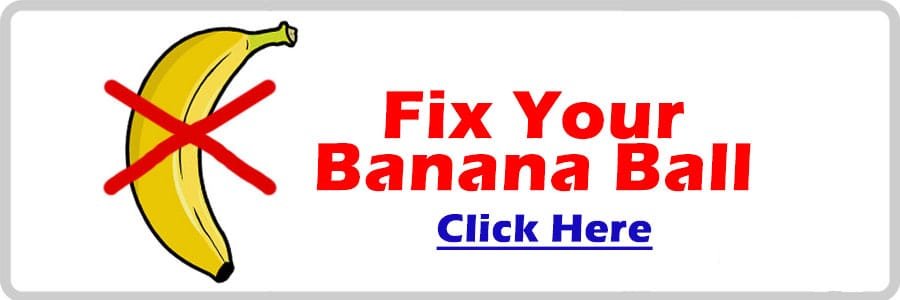Have you ever found yourself frustrated on the golf course, watching your ball slice away instead of soaring straight down the fairway? It can be disheartening, but the good news is that a slice is often fixable, and one of the most effective ways to address it is by adjusting your grip.
Understanding the Slice
Before you can fix your grip, it’s vital to understand what causes a slice. A slice occurs when the clubface is open relative to the swing path at impact, causing the ball to curve dramatically to the right (for right-handed golfers). This can be due to multiple factors, but your grip plays a significant role.
Common Causes of a Slice
Several mistakes can lead to a slice. Here are a few of the most common culprits:
- Open Clubface: If your clubface is open at impact, it results in a slice. An open clubface means the angle is facing away from where you aim, causing the ball to spin in the opposite direction.
- Swing Path: If your swing path is too steep or from outside to inside, it can exacerbate an open clubface, leading to a slice.
- Grip Position: An improper grip can lead to a loss of control over the clubface, and if it’s too weak, it can lead to that dreaded slice.
The Importance of a Proper Grip
Your grip is your only direct connection to the club. It is essential for controlling the clubface and ensuring proper swing mechanics. A well-adjusted grip can not only help eliminate a slice but also improve your overall game.
Types of Grips
There are a few common grips you can use in golf. Each has its benefits, but for overcoming a slice, you may want to consider a more neutral or strong grip. Here are the most popular types:
| Grip Type | Description |
|---|---|
| Interlocking | Fingers of the left hand intertwine with the fingers of the right hand, offering good control and power. |
| Overlapping | The pinky finger of the right hand rests on top of the index finger of the left hand. This grip is often used by those with longer hands. |
| Baseball Grip | All ten fingers grip the club. This grip is less common among serious golfers but may suit beginners or those with larger hands. |
Adjusting Your Grip
To fix a slice quickly, you may need to change your grip. Here’s how to develop a grip that encourages a square clubface at impact.
Step 1: Identify Your Current Grip
Before making any changes, the first step is to analyze your current grip. Take a good look at how you’re holding the golf club.
- Is your left hand rotated too far to the left?
- Can you see more than two knuckles on your left hand when looking down?
If the answers to these questions lean towards “yes,” you might have a weak grip, which can contribute to a slice.
Step 2: Strengthening Your Grip
To encourage a more favorable clubface position, it’s often recommended to strengthen your grip. Here’s how to do that:
- Position Your Left Hand: Rotate your left hand to the right so that you can see three or four knuckles. This position will help to close the clubface at impact.
- Position Your Right Hand: Place your right hand on the club such that it wraps around your left hand without interfering with its positioning. Your right thumb should point down the shaft, not over the top.
Step 3: Check Your Pressure
The pressure you apply to the grip is also vital. If you grip the club too tightly, it can cause tension during your swing, impairing your flexibility and range of motion. On the other hand, if your grip is too loose, you risk losing control of the clubface. Aim to grip the club firmly but relaxed, maintaining control without excessive tension.
Grip Pressure Guidelines
| Grip Pressure | Description |
|---|---|
| Light Grip | Might lead to loss of control, risking swinging too fast and leading to slices. |
| Medium Grip | A good balance that allows for fluid motion without squeezing too tight. |
| Tight Grip | Can introduce tension, making it hard to maintain a smooth swing, possibly exacerbating a slice. |
Practicing New Grip Techniques
Changing your grip can feel awkward at first, but practice can help you become accustomed to a new style. Here are some methods to practice:
Grip Drills
- Mirror Practice: Stand in front of a mirror with your club. Test different grip orientations while observing your hand placements.
- Swing Without a Ball: Take practice swings focusing on proper grip pressure and hand alignment. This will help your muscle memory adjust without the added stress of hitting a ball.
- Short Game Drills: Use your new grip while practicing putting and chipping. These shorter swings will give you immediate feedback on how well your grip translates into control.
Practicing With a Coach
Sometimes, getting professional input can provide you with solid advice tailored to your unique swing style. A golf pro can analyze your grip and provide specific drills to help you overcome a slice.
Additional Adjustments
While adjusting your grip is essential, it can also be beneficial to consider other aspects of your swing.
Aligning Your Body
Your body’s alignment can impact how your clubface meets the ball. To fix alignment issues:
- Feet Position: Ensure your feet, hips, and shoulders are aligned parallel to your target line.
- Ball Position: Position the ball correctly in your stance (typically near the left heel for drivers) to ensure the right angle of attack.
Swing Path Awareness
Being conscious of your swing path is important in conjunction with grip adjustments. Practicing an inside-to-outside swing path can help:
- Focus on the Swing Path: As you swing, visualize your club traveling slightly from the inside out to avoid slicing.
- Using Alignment Rods: Setting up alignment rods on the range can provide a visual reference to ensure you are following the correct swing path.
When to Seek Professional Help
Not everyone can master grip adjustments on their own, and that’s perfectly okay! If you’ve tried making changes but are still struggling with slicing, seeking a golf professional might be your best option. Here are some signs it might be time to book a lesson:
- Persistent Slice: If, after practicing, your slice continues, this could indicate deeper issues beyond grip.
- Frustration Levels: If you’re feeling more frustrated than ever, a professional can help reset your focus.
- Understanding Mechanics: If you’re not sure why you’re slicing, a coach can help you understand the mechanics of your swing and offer tailored advice.
The Mental Game
Don’t forget that honing your golf skills includes a mental component. Maintaining a positive mindset while working on your grip change and swing is essential. Here are some tips:
Visualization Techniques
Take a moment before you swing to visualize your desired outcome. Picture the ball soaring straight down the fairway. This positive visualization can help you approach your shot with confidence.
Keep a Routine
Establish a pre-shot routine that helps you relax and focus. This might involve breathing exercises, a specific practice swing pattern, or a visualization of how you want your shots to go.
Evaluating Progress
As you practice your new grip and adjustments, take the time to evaluate your progress. Here are some ways to monitor improvements:
- Track Your Slices: Keep track of how many slices you encounter over a series of rounds. Are they decreasing?
- Performance Changes: Have you noticed an increase in distance or accuracy with your drives? Document your scores and see if there’s been an overall improvement.
- Feel and Comfort: Pay attention to how your grip feels over time. Log your feelings in a journal to help you recognize what works well and what doesn’t.
Conclusion
Fixing your grip to cure a slice can take time and practice, but with the right adjustments and a positive mindset, you can get there. Your grip is an essential element in controlling your golf game. By strengthening your grip, maintaining the proper pressure, and paying attention to other facets of your swing, you can work your way toward straighter shots and lower scores.
Now, take a deep breath, head to the range, and start practicing. The understanding and patience you develop now will pay off on the course. Just remember, every great golfer has faced challenges on their journey, and overcoming them is part of the joy of the game. Happy golfing!







